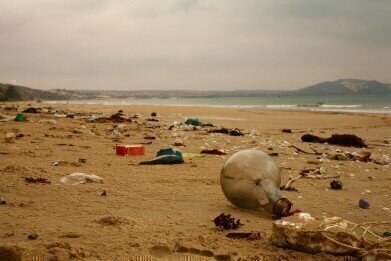Business News
What Are Black Flag Beaches?
Jul 28 2020
You might have heard of a beach being awarded Blue Flag status for the cleanliness of its waters, sustainable operation of its facilities and ease of access for visitors. But how about a Black Flag? In Spain, this ignominious accolade is handed out to stretches of coastline that aren’t so well-maintained and are therefore not recommended for bathing, swimming or relaxing.
This year, the environmental federation Ecologistas en Acción (Ecologists in Action) have conducted their 15th annual review of almost 5,000 miles of Spanish coastline to determine who would be the hapless recipients of Black Flag status. In total, the group handed out 49 flags, two to each of the 22 Spanish provinces which lie on the coast – but indicated that the actual number of degraded beaches would be far higher.
Black and blue
The Blue Flag was first launched in 1997 as a means to determine the cleanliness and sustainability of beaches in Europe. From 2001 onwards, it has been adopted as an international standard and today features over 4,600 beaches, marinas and boats from 46 countries around the world. While Spain certainly has plenty of beaches befitting Blue Flag status, it, along with France and Italy, has consistently shown poor overall results when compared with the rest of Europe.
To try and address that problem, the Black Flag awards were established 15 years ago. In the last six years alone, Ecologistas en Acción have distributed 284 Black Flags across the country, highlighting parts of the country’s coastline where adequate care and conservation is not being implemented. Troublingly, many of the implicated beaches are hotspots for British tourists, such as those on Costa del Sol and Costa Blanca.
This year, the federation have handed out 49 flags, two to each province in the country. However, the accompanying report makes it clear that just two were selected for simplicity’s sake and that the real number is expected to be significantly higher. “Despite the fact that only two examples are used for each province, unfortunately the list should include more beaches,” it said.
A variety of contributing factors
Of the 49 Black Flags in 2020, 19 were assigned on the basis of untreated sewage. Given that novel methods of monitoring the wastewater network now make it easier than ever to keep track of the effluent from power plants, factories and other industrial sites, that statistic is unforgiveable. More must be done to ensure that wastewater is treated at the point of origin before it can contaminate Spain’s waterways, endanger the marine life living within them and compromise the country’s natural beauty.
Other contributing factors include the encroachment of invasive species of flora and fauna, which disturb native ecosystems, as well as erosion of sandy beaches and the expansion of ports, marinas and other manmade developments. Meanwhile, the extreme weather events that Spain has experienced in recent years have led to mass flooding and exacerbated the problem further.
What’s worse, the current coronavirus pandemic is expected to spark a huge increase in the number of single-use face masks and gloves, a significant percentage of which will inevitably end up in the sea. Once there, the discarded items can become tangled in the bodies of marine organisms or, worse yet, break down into even more dangerous microplastic particles and become ingested by fish, mammals and birds.
Digital Edition
IET 34.2 March 2024
April 2024
Gas Detection - Biogas batch fermentation system for laboratory use with automatic gas analysis in real time Water/Wastewater - Upcycling sensors for sustainable nature management - Prist...
View all digital editions
Events
Apr 30 2024 Melbourne, Australia
Apr 30 2024 Birmingham, UK
May 03 2024 Seoul, South Korea
May 05 2024 Seville, Spain
May 06 2024 Minneapolis, MN, USA



















